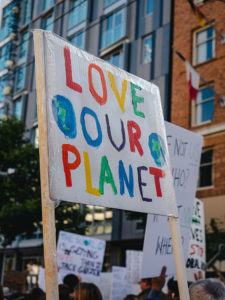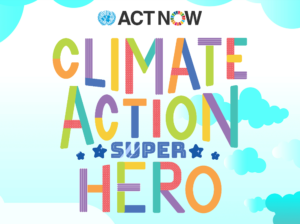Inspiring Kids to be Climate Superheroes
 Photo by Ronan Furuta on Unsplash
Photo by Ronan Furuta on Unsplash Despite its prominence in our present world, anthropogenic climate change―changes in climate due to human activity―does not have a long history. It is the result of rapid industrialization beginning only around 200 years ago. In this time, scientists and experts have evaluated the major and minor concepts that drive climate change. Among the most crucial facts assessed: (1) it is a result of human action, and (2) it is going to take a massive toll on the Earth’s systems as we know them. Because it is a relatively new concept, the beliefs surrounding climate change promote conflicting ideas of why it is happening, if it even matters, and what we can do to deter the effects. The American Humanist Association’s (AHA) Resolution on Climate Change recognizes those two crucial facts mentioned above stating,
“As humanists, we acknowledge the damage done to our environment has been caused by human action and constitutes an existential threat to humanity and many other species that have not already been wiped out.”
When it comes to climate change, there is no clear consensus about what is happening and what needs to happen. There are thousands of opinions on the phenomenon’s past, present, and future. This contentious disagreement leaves no clear roadmap for the future, putting the health of Earth’s systems and all living things on it at risk. Our future not only rests in the hands of those currently in power, but also the coming generations.
When thinking of young people involved in climate action, famous names like Greta Thunberg and Isra Hirsi may come to mind. These young leaders speak at conferences in the presence of world leaders and lead thousands of others in climate strikes. Thunberg and Hirsi are two examples of where the spotlight lies on youth in the climate movement, but like many other movements, the spotlight moments are not where action begins. There are many ways for youths to get involved that are more accessible than speaking at an international conference.

The United Nations provides an interactive page on its website aimed to teach children about climate change as well as inspire tangible action. Their page features “Climate Action Superheroes” like “Veggie Vindicator,” “Fume Fighter,” “Recycle Ranger,” and more. On the main page you can visualize all of the superheroes and their roles through the fun graphics. Exploring the page, both youths and adults can learn more about each superhero and why its role is important. The website approaches each superhero’s biography from a social and scientific view, highlighting scientific climate facts as well as what the superhero is doing, and what your child can do, to take action.
For example, the “Truth Talker” superhero explains how climate change is caused by human actions, teaching youths that in pursuit of a better future for all, it’s important to share known facts with their communities. After reading the general information about each superhero, you can download their “missions.” Missions are interactive activities that bestow a certificate upon completion. The Truth Talker’s mission is to draw the superhero and decipher a few statements as true or false. This adds some good fun to the education to keep young ones engaged and get them excited.
Kids add a tangible energy to the climate movement. It’s their future at stake, and it’s important for younger generations to be grounded in the science that adults currently have a difficult time agreeing on. Giving children small, actionable activities can catalyze ideas for their own solutions to tackle as they grow older. The United Nation’s website may seem like a small piece of the solution, but starting small is how change happens.
It will take young superheroes to tackle climate change and save the world. So grab your markers and let’s get to it!
To find more resources for both the adults and young ones in your family, check out the “Additional Resources” toolkit on HEREforclimate.org.
